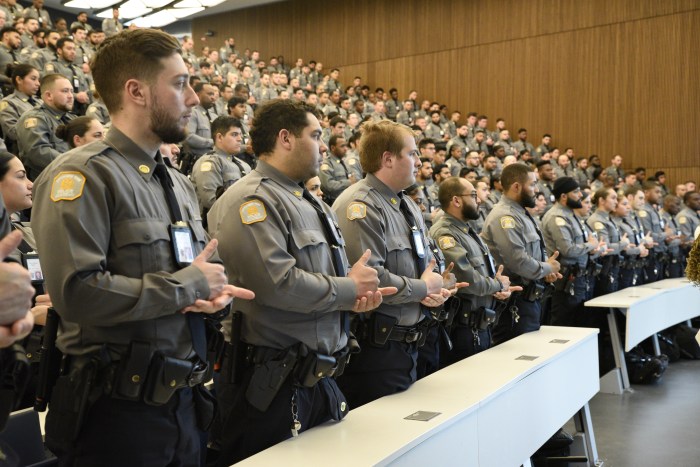Until the advent of photography, every time you witnessed something scary, it was in your neighborhood.
A tiger sighting? Better watch out. Guy with a spear? Avoid. Your cousin dropped dead after eating a mushroom? Let’s not put those in the salad.
But today, explained Margee Kerr, author of “Scream: Chilling Adventures in the Science of Fear,” we are bombarded by images of scary things that are absolutely not immediate threats. And yet, we keep reacting as if they are, because that see it–flee it wiring worked well for 99.99 percent of human history. Never mind that New York City is on target to have the lowest murder rate in its history.
Kerr was speaking at St. Francis College in Brooklyn, a guest of its senior citizen lecture series. She began by explaining that fear is not just in our brains, in every fiber of our bodies.
When startled, for instance, our blood pumps faster. Sugar is converted to energy so we can be quick and strong. We sweat. We breathe faster. Our pupils dilate, perhaps to hyper-focus on the threat. Endorphins are released so that even if we are hurt — a broken ankle, a bullet through the arm — we can temporarily ignore the pain and keep going. Our bodies prepare us for battle.
Which is great, if we actually are about to battle. It’s less great when the nightly news just wants to keep us tuned in through a commercial, so it teases: “Up next: The deadly threat to your children that is in your home!”
“Our media are filled with images and words that incite feelings of fear and anger, which motivate action,” Kerr explained. Companies incite fear so they can sell us everything from alarm systems to apps that track our kids. And politicians incite fear so they can promise to keep us safe if elected. It doesn’t matter whether the dangers are real or so remote as to be ridiculous: Fear sells. What’s new is the immediacy with which it infiltrates our lives, and the effect it is having on people, especially parents.
“When the Newtown school shooting happened,” Kerr told the audience, “I was in a meeting. Everyone was getting alerts on their phones. And for the rest of the day, we were all just paying attention to this thing that was happening hundreds of miles away that we had no control over, and no connection to.”
In an earlier era, the news from several states away would have arrived days later in a newspaper story, or even weeks later, when a traveler came to town. The immediacy brought to us by the media (I’d never realized how closely linked those words are) creates a more constantly outraged public. A shooting here, a bombing there — as these flood in, the literally hyperventilating public demands that more be done.
That’s why, even though the Sandy Hook school where the mass shooting occurred had a buzz-in door system in place, schools around the country immediately started making it harder for people to enter — some by adding buzz-in systems. Fear and empathy forced them to “do something,” no matter how pointless that “something” was.
Similarly, when you can go on Facebook and see stories of moms who felt their kids were “almost” snatched from the aisles of Ikea, or videos re-enacting how easy it could be to lure a child from the park, there’s your blood-pumping, heart-thumping reaction again. Doesn’t matter that those weren’t actual abductions. Your body sends a message to your brain and the message is always “Watch your children even more closely than you’ve been doing.”
The problem is that our fears are wildly out of proportion with the danger at hand — because it’s really not at hand, it’s usually far away, or even fictional. Yet that, coupled with the fact we now have the technology to almost constantly watch our kids via baby monitor, smart phone, and even online school grades, makes it almost impossible not to worry and watch All. The. Time.
“You have the ability to monitor your child 24-7,” said Kerr. “So now, because you have that choice, if you choose not to do it and something bad happens, it’s all your fault.”
That is the reason parents today are “helicoptering.” Unlike our own parents, who could not see where and what we were doing at any given time, today’s parents can. So choosing not to becomes a deliberate choice: “I trust my unsupervised kid in the world.”
That’s a hard thing for parents to do, since now if something “bad” happens they will be accused of insufficient hovering: “Why weren’t you watching?”
Photography brought us a new level of fear. Technology is bringing us a new level of blame. The upshot is parents worrying and watching all the time.
Lenore Skenazy is author of “Has the World Gone Skenazy?”


















